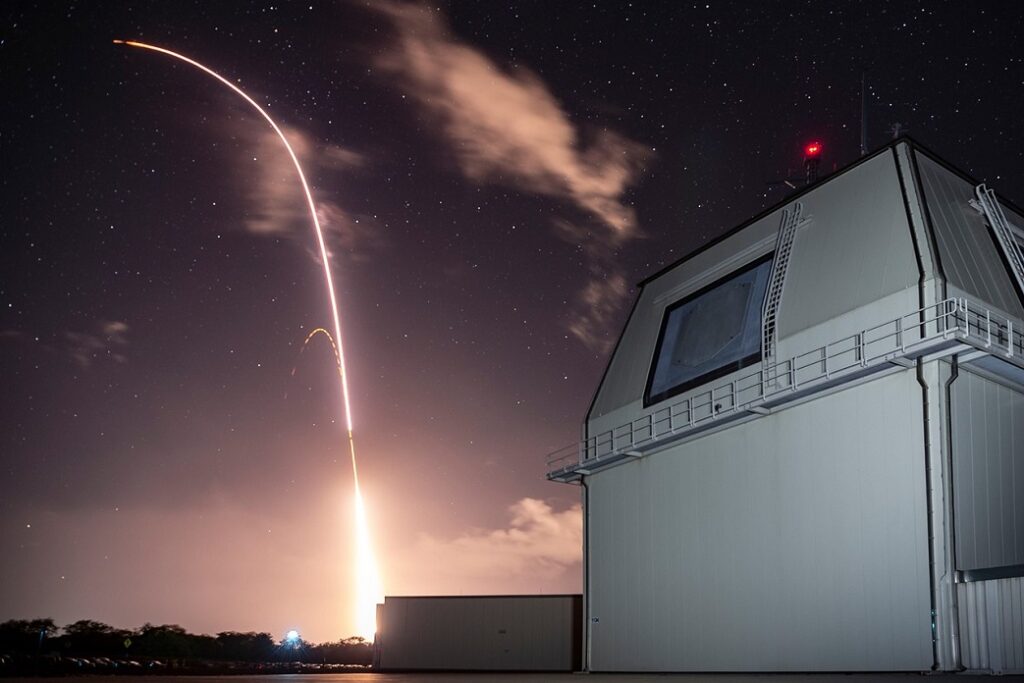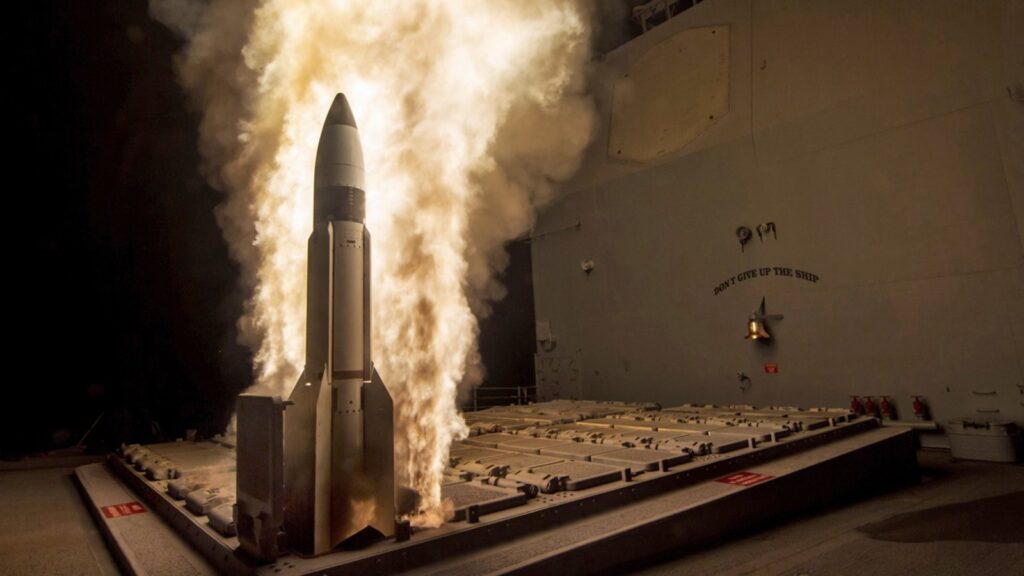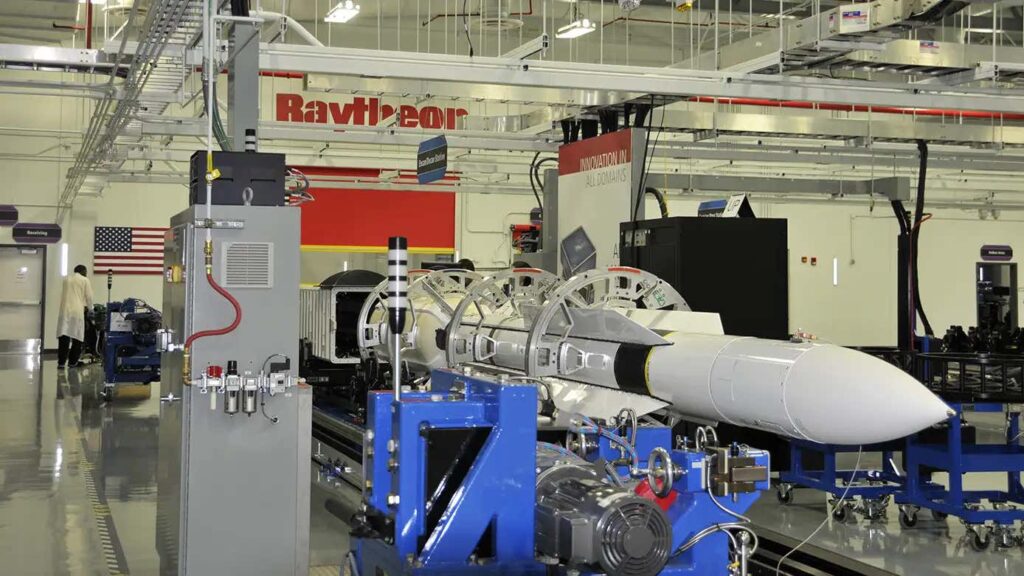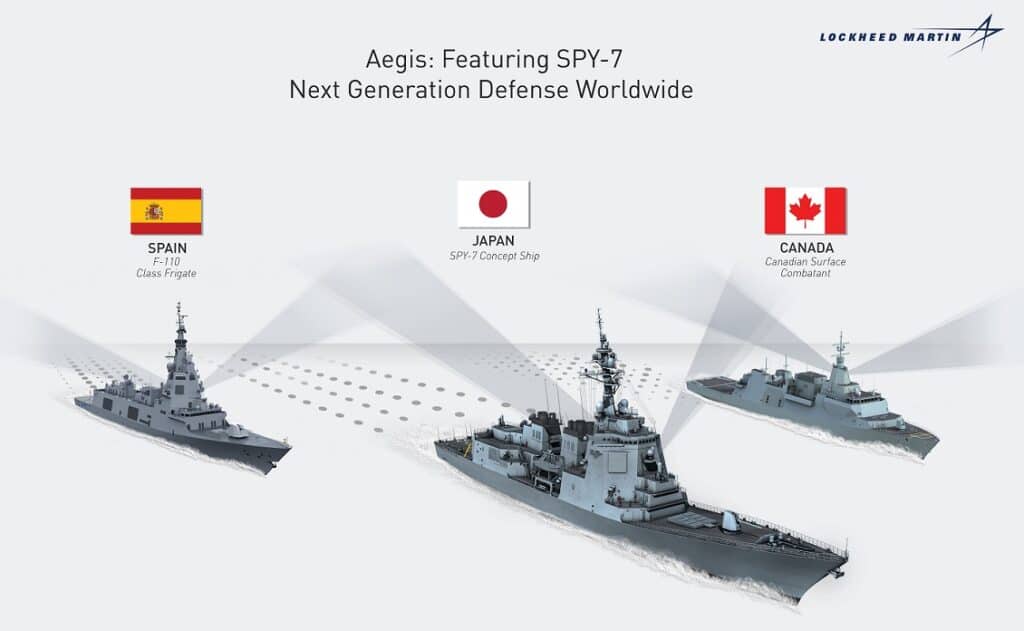The Aegis ballistic missile defence (BMD) system, carried out by the Missile Defense Agency (MDA) and the U.S. Navy, gives Aegis cruisers and destroyers the capability to conduct BMD operations. Aegis ships can perform BMD operations by incorporating changes to the Aegis system’s computers and software and arming the ships with BMD interceptor missiles.
All but three of the U.S. Navy’s cruisers and destroyers are called Aegis ships because they are equipped with the Aegis ship combat system—an integrated collection of sensors, computers, software, displays, weapon launchers, and weapons named for the mythological shield that defended Zeus. (The exceptions are the Navy’s three Zumwalt (DDG-1000) class destroyers)
The Aegis system was initially developed in the 1970s for defending ships against aircraft, anti-ship cruise missiles (ASCMs), surface threats, and subsurface threats. The Navy first deployed the system in 1983, and it has been updated many times since. The Navy’s Aegis ships include Ticonderoga (CG-47) class cruisers and Arleigh Burke (DDG-51) class destroyers.
BMD-capable Aegis ships operate in European waters to defend Europe from potential ballistic missile attacks from countries such as Iran and the Western Pacific and the Persian Gulf to provide regional defence against possible ballistic missile attacks from countries as North Korea and Iran. There are also two Aegis Ashore sites in Poland and Romania.

Aegis BMD Interceptor Missiles
The Aegis Combat System also provides air and fleet defence against enemy aircraft and cruise missiles using variations of the Standard Missile-3 (SM-3), the SM-2 Block IV, SM-6, and the Evolved Sea Sparrow Missile (ESSM), and ship defence systems such as the Phalanx Close-In Weapon System (CIWS). It also controls the firing of Tomahawk land-attack cruise missiles.
SM-3 Midcourse Interceptor
The SM-3 is designed to intercept ballistic missiles above the atmosphere (i.e., exo-atmospheric intercept) in the midcourse phase of an enemy ballistic missile’s flight. It is equipped with a “hit-to-kill” warhead, a kinetic vehicle designed to destroy a ballistic missile’s warhead by colliding with it. The current versions of the SM-3 missile include the SM-3 Block IA, the SM-3 Block IB, and the SM-3 Block IIA.
Compared to the Block IA version, the Block IB version has an improved (two-colour) target seeker, an advanced signal processor, and an enhanced divert/attitude control system for adjusting its course. In addition, compared to the Block IA and 1B versions, which have a 21-inch-diameter booster stage at the bottom but are 13.5 inches in diameter along with the remainder of their lengths, the Block IIA version has a 21-inch diameter along its entire length. The increase in diameter to a uniform 21 inches provides more room for rocket fuel, permitting the Block IIA version to have a burnout velocity (a maximum velocity, reached at the time the propulsion stack burns out) that is greater than that of the Block IA and IB versions, as well as a larger-diameter kinetic warhead. The United States and Japan cooperated in developing certain technologies for the Block IIA version, with Japan funding a significant share of the effort.

Raytheon and the Missile Defense Agency are exploring options to extend the range of the Standard Missile-3 Block IB—pushing the ballistic missile interceptor to dramatically expand a defended area by allowing the weapon to communicate with off-board radars—a move that would require enhancing one of the Aegis ballistic missile defence system’s newest features: Engage-on-Remote.
SM-2 and SM-6 Terminal Interceptors
The SM-2 Block IV was MDA’s and the Navy’s initial sea-based terminal-phase BMD interceptor. It is designed to intercept ballistic missiles inside the atmosphere (i.e., endo-atmospheric intercept) during the terminal phase of an enemy ballistic missile’s flight. It is equipped with a blast fragmentation warhead. A limited number of these missiles were produced years ago.
The SM-6 is MDA’s and the Navy’s more capable next-generation sea-based terminal-phase (i.e., endo-atmospheric) BMD interceptor. It is based on the SM-6 air defence missile (the Navy’s successor to the SM-2 air defence missile). Thus, the SM-6 is a dual-capability missile used for either air defence (i.e., countering aircraft and ASCMs) or ballistic missile defence.

The Defense Department has launched a prototype project that aims to dramatically increase the speed and range of the Navy’s SM-6 by adding a larger rocket motor to the ship-launched weapon, a move that seeks to improve both the offensive and defensive reach of the Raytheon-built system. On Jan. 17, 2018, the Navy approved plans to develop a Dual Thrust Rocket Motor with a 21-inch diameter for the SM-6, which is currently fielded with a 13.5-inch propulsion package. The new rocket motor would sit at the top of the current 21-inch booster, producing a new variant of the missile: the SM-6 Block IB.
Upcoming Test Against Mock Hypersonic Weapons with SM-6 and SPY-7
Together with the U.S. Navy, the Missile Defense Agency plans to test an SM-6 missile against an “advanced maneuvering threat,” a term that has been used concerning unpowered hypersonic boost-glide vehicles, later this year. The Pentagon says that unspecified versions of the SM-6 have already demonstrated some degree of capability against these types of weapons, examples of which Russia and China have already begun putting to service. In addition, a new variant of the SM-6, the Block IB, is already under development and will itself be able to reach hypersonic speeds.
Building upon Aegis’s progress, Lockheed Martin has integrated a new SPY-7 ship-based radar variant engineered to increase range, sensitivity, and detection capability beyond existing systems significantly. It is a maritime variant of the evolving Long Range Discrimination Radar (LRDR) missile defence system prepared for operational readiness later this year.

Aegis Ships in Allied Navies
Sales of the Aegis system to allied countries began in the late 1980s. Allied countries that now operate are building or planning to develop Aegis-equipped ships, including Japan, South Korea, Australia, Spain, and Norway. Japan’s Aegis-equipped ships are BMD-capable. However, the Aegis-equipped ships operated by South Korea, Australia, Spain, and Norway are currently not BMD capable.
Check out Naval Library App to find out the specifications of the Aegis Ballistic Missile Defence System.





